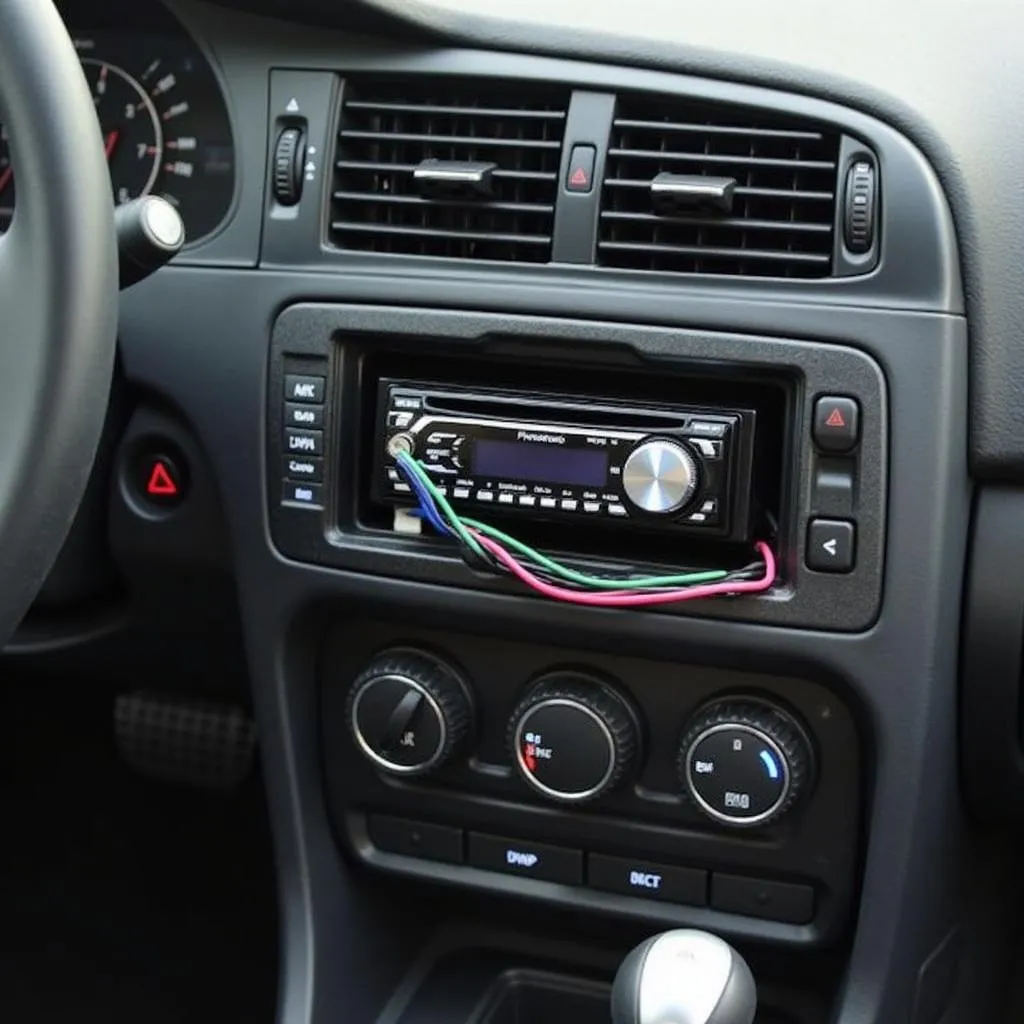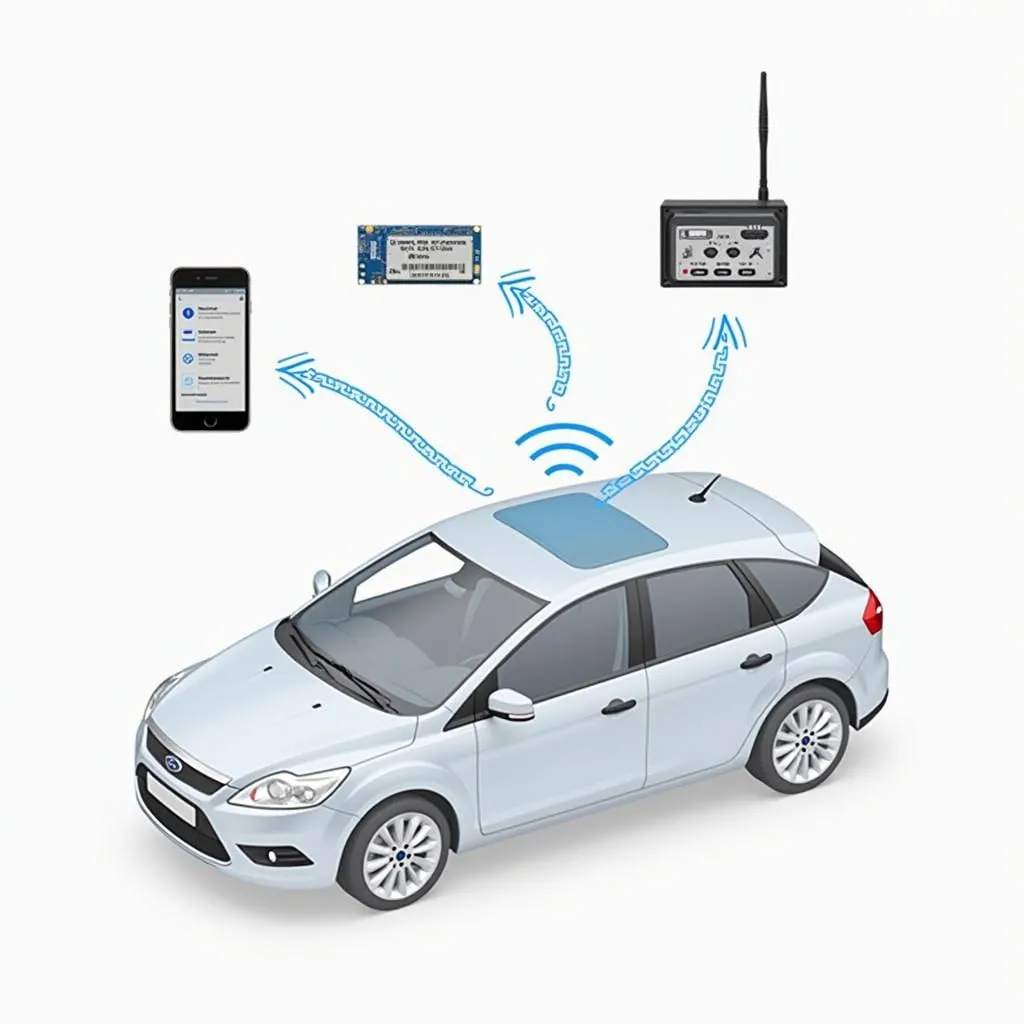That little yellow light on your dashboard shaped like a circle with parentheses around it can be a bit unnerving. It’s your brake pad warning light, and it’s telling you something is wrong with your car’s braking system. Many car owners often wonder, “Can I drive with the brake pad warning light on?”. The short answer is: You shouldn’t. This light is a serious safety concern and should never be ignored.
Understanding Your Car’s Braking System
Before we delve into the risks, let’s understand how your car’s braking system works. When you press the brake pedal, you activate hydraulic pressure that pushes calipers against the brake rotors. Sandwiched between the caliper and the rotor are your brake pads, which provide the friction needed to stop the vehicle.
Over time, brake pads wear down due to the heat and friction generated during braking. Most modern vehicles have a wear sensor embedded within the brake pad material. This sensor triggers the brake pad warning light on your dashboard when the pad reaches a critically low thickness.
The Dangers of Ignoring the Brake Pad Warning Light
Driving with worn brake pads is incredibly risky for several reasons:
- Reduced Braking Power: The most significant danger is the decreased braking efficiency. Worn brake pads can’t grip the rotors effectively, increasing your stopping distance. This can be incredibly dangerous, especially in emergency situations.
- Rotor Damage: Driving with worn brake pads means the metal backing plate of the pad will eventually make contact with the rotor. This metal-on-metal contact can cause severe damage to the rotors, often requiring costly replacements.
- Caliper Damage: The brake caliper, responsible for pushing the pads against the rotor, can also suffer damage if the pads wear down completely. This can lead to uneven braking or even complete brake failure.
How Long Can You Drive With the Brake Pad Warning Light On?
There’s no definitive answer to this question. While some mechanics might suggest a few hundred miles at most, it’s a dangerous gamble. Remember, driving habits, road conditions, and vehicle type all influence brake pad wear.
It’s crucial to prioritize safety. Once the warning light illuminates, schedule an inspection with a trusted mechanic immediately.
What to Do When the Light Turns On
- Don’t Panic: While the light signals a problem, it doesn’t mean your brakes are gone completely. Stay calm and avoid sudden braking.
- Reduce Speed and Drive Cautiously: Maintain a safe distance from other vehicles, and avoid heavy traffic areas if possible.
- Schedule an Inspection: Contact a certified mechanic as soon as possible to diagnose the issue. They will assess your brake pad thickness and check for other potential problems within the braking system.
- Follow Mechanic Recommendations: Based on the inspection, your mechanic will recommend the best course of action, whether it’s brake pad replacement, rotor resurfacing, or other necessary repairs.
Preventing Premature Brake Pad Wear
While brake pads have a limited lifespan, adopting certain driving habits can help prolong their life:
- Anticipate Stops: Avoid harsh braking by looking ahead and anticipating stops. Coast to a stop whenever possible.
- Maintain Consistent Speed: Frequent acceleration and hard braking put excessive strain on your brakes. Try to maintain a steady speed, especially in heavy traffic.
- Lighten the Load: Carrying heavy loads in your vehicle puts additional stress on the braking system. Travel light whenever possible to reduce wear and tear.
Expert Insights
“Ignoring your brake pad warning light is like ignoring a flashing ‘low fuel’ warning. You might be able to push it a little further, but eventually, you’re going to be stranded – and in the case of brakes, the consequences could be much more severe.” – Mark Stevenson, Senior Automotive Technician
“Remember, your brakes are your vehicle’s most crucial safety feature. Regular maintenance and timely repairs are not expenses, they’re investments in your safety and the safety of others on the road.” – Sarah Jenkins, Certified Brake Specialist
Conclusion
Driving with the brake pad warning light on is never a good idea. It’s crucial to understand that this warning light indicates a potential safety hazard. Prompt inspection and repair are essential to ensure your vehicle’s braking system operates at peak performance, providing you with the peace of mind you need on the road.
FAQs
1. Can I replace my brake pads myself?
While possible, it’s generally recommended to have a professional handle brake pad replacement. It requires specific tools and expertise to ensure the job is done correctly for optimal safety.
2. How much does it cost to replace brake pads?
The cost varies depending on your vehicle’s make and model and the mechanic you choose. However, it’s generally an affordable repair that far outweighs the potential costs of ignoring the problem.
3. How often should I get my brakes checked?
It’s a good rule of thumb to have your brakes inspected at least once a year or every 12,000 miles, whichever comes first. If you notice any unusual noises or changes in braking performance, schedule an inspection immediately.
4. Can I drive with a brake pad warning light on if I’m close to home?
It’s best to avoid driving with the warning light on at all. Even a short distance poses risks. It’s better to err on the side of caution and have your vehicle towed if you’re concerned about safety.
5. What other lights on my dashboard could indicate brake problems?
Apart from the brake pad warning light, keep an eye out for the ABS (Anti-lock Braking System) light and the general brake system warning light, often a red exclamation mark within a circle. These lights can signal other potential brake system issues that require immediate attention.


